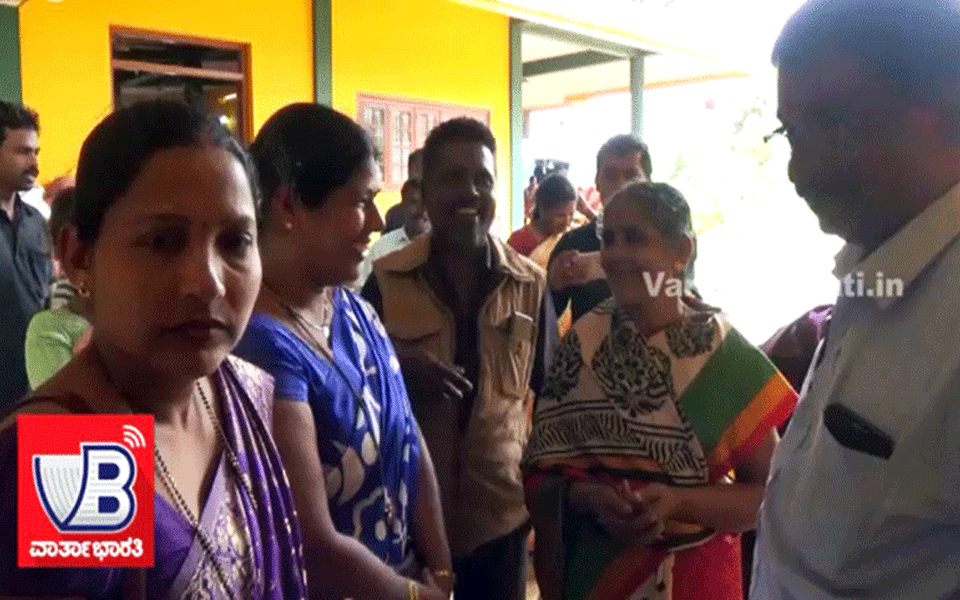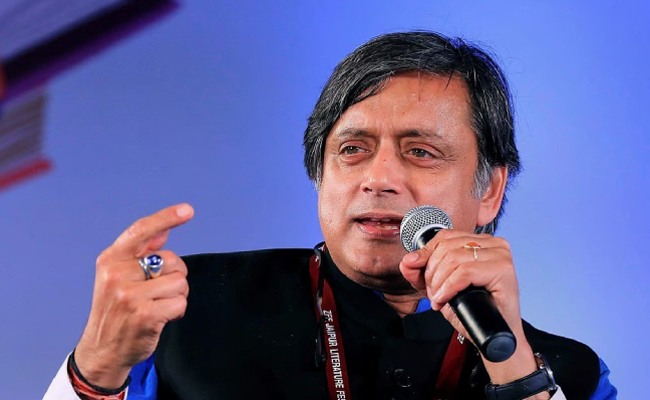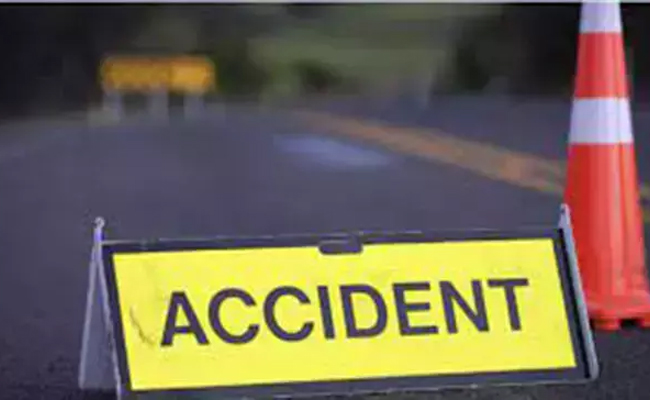Madikeri, August 25: Hundreds of rain-flood, landslides victims from villages around Jodupala in Madikeri taluk in Kodagu district are still spending days at various rescue camps. The victims of these villages have been housed in the rescue camps at Tekkil Community Hall, Sampaje and Devarakolli Government Schools in Sullia Taluk. 760 members of 198 families have been housed at Tekkil Community Hall and Sampaje camp. While some of them have gone to their relatives' homes, many people of Jodupala and Yeradane Monnangeri village are still living in camps as these are the worst affected areas.
Jodupala and Yeradane Monnangeri have lost their contact with other places because there have been severe damages. Roads connecting villages have entirely vanished. Moreover, most villagers' houses and lands are damaged. The Officials have given the green signal for the people to shift to their houses after verifying the situation of their homes, except in these two villages. However, a team of senior officials and experts will inspect Jodupala and Yerdane Monnangeri villages. People will be allowed to stay there, only after the team confirms that there is no risk to reside in these villages, a senior official said.
Despite all the arrangements in the camps, the Jodupala and Yerdane Monnangeri villagers who have lost their homes and lands are worried about their livelihood. The rescue camps cannot last longer. Villagers do not have their houses to live in if even they want to go to their villages. Moreover, there is no road for them to reach their place. “Our life is intact. We do not know what action the government will take to settle us. Organizations, politicians, and officials are coming and assuring us. We have stayed here for eight days,” Krishnappa of Jodupala village lamented.
Three camps in Sullia Taluk have been opened for the flood victims of Jodupala and surrounding villages in Madikeri taluk. Doctors have been assigned to serve 24 hours a day. The necessary drugs are available. All types of precautionary measures have been taken to prevent infectious diseases. Hot water is being provided to all the victims. Hot water is being provided even for bathing also.
- Dr. Subrahmanya, Sullia taluk medical officer
Let the Truth be known. If you read VB and like VB, please be a VB Supporter and Help us deliver the Truth to one and all.
New Delhi (PTI): Congress leader Shashi Tharoor on Saturday, while lauding the win of the UDF in Kerala local bodies elections, also congratulated the BJP for its historic performance in his Thiruvananthapuram constituency, calling it the "beauty of democracy".
In a post on X, he said the people's verdict must be respected, whether for the UDF overall or for the BJP in his constituency.
"What a day of amazing results in the Kerala local self-government elections! The mandate is clear, and the democratic spirit of the state shines through.
"A huge congratulations to @UDFKerala for a truly impressive win across various local bodies! This is a massive endorsement and a powerful signal ahead of the state legislative elections. Hard work, a strong message and anti-incumbency have all clearly paid off to achieve a much better result than in 2020," Tharoor said.
He said he also acknowledges the historic performance of the BJP in Thiruvananthapuram, and "offer humble congratulations on their significant victory in the city corporation - a strong showing that marks a notable shift in the capital's political landscape."
Tharoor said he campaigned for a change from 45 years of the LDF "misrule", but the voters have ultimately rewarded another party that also sought a clear change in governance.
"That is the beauty of democracy. The people's verdict must be respected, whether for the UDF overall or for the BJP in my constituency.
"We will continue to work for the betterment of Kerala, advocating for the people's needs and upholding the principles of good governance. Onwards and upwards!" Tharoor, who is the MP from Thiruvananthapuram, said.
The lotus bloomed in the state capital as the BJP-led NDA achieved a resounding win in the polls for the Thiruvananthapuram Corporation, snatching it from the CPI(M)-led LDF and marking an end to 45 years of continuous Left rule in the local body.
The win in the Thiruvananthapuram Corporation will act as a boost for the BJP in the 2026 Assembly polls, especially in the state capital.
Of the 101 wards in the Thiruvananthapuram Corporation, the BJP won 50, LDF 29, UDF 19 and two wards were won by independent candidates.
The BJP is one seat short of a decisive majority in the corporation.
Besides this, the NDA retained the Palakkad municipality after a close battle with the Congress-led UDF and wrested the Thrippunithura Municipality from the grand old party.
In Thrissur, from where Suresh Gopi won in the Lok Sabha polls last year, the BJP won 18 out of the 46 wards in Kodungallur Municipality, eight in Thrissur Corporation, two each in Guruvayoor and Vadakkancherry municipalities, seven in Kunnamkulam Municipality, six in Irinjalakuda Municipality and one in Chalakudy Municipality.





